
 |
|
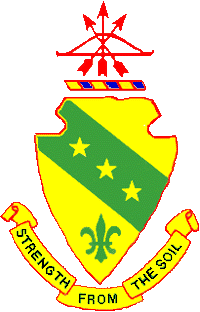













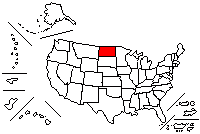
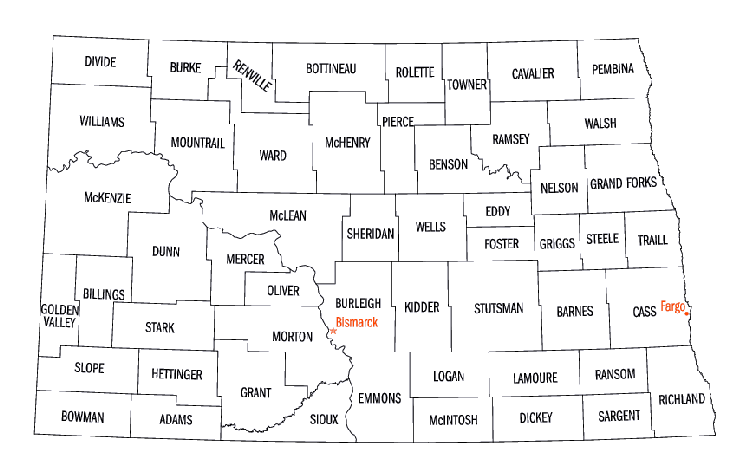

North Dakota Hymn |
Himno de Nor-Dakota
Hacia adelante, hacia adelante,
El Dios de la libertad, |
In 1926 Minnie J. Nielson, North Dakota Superintendent of Public Instruction, asked Poet James Foley of Bismarck to write the lyrics for a song about North Dakota. Foley created a poem that could be sung to the tune, The Austrian Hymn. Dr. C. S. Putnam, conductor of the North Dakota Agricultural College Band in Fargo, arranged music for Foley's work. The First public presentation of the North Dakota Hymn was in the Bismarck City Auditorium in 1927.
En el 1926 el Superintendente de Instrución Pública, Minnie J. Mielson, solicitó al poeta James Foley de Bismarck que escribiera la lírica para un canción relacionado sobre Nor Dakota. Foley creó un poema el cual fue tocado con la tonada del Himno de Australia. El Dr. C.S. Putnam, Director de la Banda del Colegio de Agricultura de Nor Dakota en Fargo, hizo los arreglos musicales. La primera presentación pública del Himno de Nor Dakota fue en el Auditorio de la Ciudad de Bismarck en el 1927.

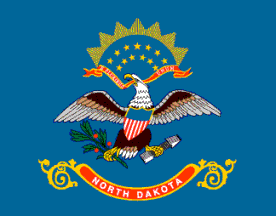
Flag:
Bandera:
The North Dakota flag was adopted on March 3, 1911.
The legislation specifically required that the flag conform to the colors,
form and size of the regimental flag carried by the North Dakota infantry in
the Spanish-American war in 1898 and Philippine War in 1899 with the exception
that the state name was placed on the scroll below the eagle.
State flag. The flag of North Dakota must consist of a field of blue silk or material
which will withstand the elements four feet four inches [132.08 centimeters] on the pike
and five feet six inches [167.64 centimeters] on the fly, with a border of knotted yellow
fringe two and one-half inches [6.35 centimeters] wide. On each side of said flag in the
center thereof, must be embroidered or stamped an eagle with outspread wings and with
opened beak. The eagle must be three feet four inches [101.6 centimeters] from tip to
tip of wing, and one foot ten inches [55.88 centimeters] from top of head to bottom of
olive branch hereinafter described. The left foot of the eagle shall grasp a sheaf of
arrows, the right foot shall grasp an olive branch showing three red berries.
On the breast of the eagle must be displayed a shield, the lower part showing seven
red and six white stripes placed alternately. Through the open beak of the eagle must
pass a scroll bearing the words "E Pluribus Unum". Beneath the eagle there must be a
scroll on which must be borne the words "North Dakota". Over the scroll carried through
the eagle's beak must be shown thirteen five-pointed stars, the whole device being
surmounted by a sunburst.
La bandera de Nor Dakota fue adoptado el 3 de marzo de 1911. La legislación
específicamente requirió que la bandera fuera conforme con los
colores, forma y tamaño de la bandera del regimiento que fue utilizado
por la infantería de Nor Dakota en la guerra Hispanoamericana en el 1898 y en la
guerra de las Filipinas en el 1899, pero que el estado del nombre fuera
colocadon en una banda bajo el águila. La bandera consistirá de un campo
azul seda o metalico el cual aparecerán los elementos de cuatro pies y cuatro
pulgadas (132.08 centímetros) desde la punta y cinco pies y seis pulgadas
(167.64 centímetros) a lo largo, con un borde de un amarido anudado de dos y
media pulgadas (6.35 centímetos) de ancho. En cada cara de la bandera en el centro
tendrá estampada un águila con las alas desplegadas y con el pico
abierto. El águila debe ser de diez pulsgada (55.88 centímetros) desde
la cabeza hasta la punta del ramo de olivo. En la garra derecha tendrá
un grupo de flechas, la garra izquierda tendrá una rama de oliva con tres bayas.
En el pecho del águila aparecerá un escudo, la parte de abajo presentará siete
franjas rojas y seis franjas blancas colocadas alternadamente. En el pico
debe tener un cinto con las palabras "E Pluribus Unum". Bajo el águila
habrá otro cinto con las palabras "North Dakota". Sobre el cinto que está
en el pico deben haber treinta y cinco estrellas dentro de un sol resplandeciente.

North Dakota
Capital City: Bismarck
Admission to Statehood: November 2,1889
Border States: Minnesota, Montana and South Dakota
Motto: Liberty and union, now and forever, one and inseparable.
One and Inseparable
This motto is a quotation from Daniel Webster’s Reply to Hayne. When the state seal was adoptd in 1889, the law changed the wording of the motto used on the territorial seal to its present form.
Nickname: Peace Garden State / Flickertail State / Roughrider State
National: North Dakotans
Origin of state's name: Was named by the USA Citezens. The name Dakota comes from a Sioux Indian word meaning "allies."
Nor Dakota
Ciudad Capital: Bismarck
Admitido como estado: 2 de noviembre de 1889
Estados Limítrofes: Minnesota, Montana y South Dakota
Lema: Libertad y unión, ahora y por siempre, una e inseparable.
Este lema es una cita que Daniel Webster le dijo a Hayne. Cuando el estado adoptó su sello en el 1889, una ley cambió las palabras del lema utilizado en el sello territorial, a su forma actual.
Cognomento: El Jardín Pacífico.
Gentilicio: Nor Dakotenses
Origen del nombre: Nombre dado por los Estadounidenses. La palabra Dakota viene de la tribu Sioux que significa aliados.

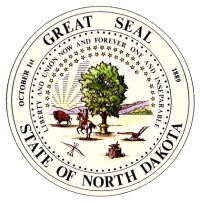


The colors of yellow gold and green are indicative of the great agricultural state of North Dakota and has particular reference to ripening grain and the abundant grazing areas. The Indian arrowhead forms the shield of the coat of arms and symbolizes the "Sioux State". The three stars denote the trinity of government; legislative, executive, and judicial. Each star in the bend is given the heraldic value of thirteen which signifies the thirteen original colonies of the United States, and the cumulative numerical value of the three stars indicates that North Dakota was the thirty-ninth state admitted to the Union. The stars also allude to the history of the territory under three foreign flags. Three stars are borne upon the coat of arms of Meriwether Lewis of the Lewis and Clark expedition and also on the coat of arms of Lord Selkirk, head of the first permanent settlement in this state. The fleur-de-lis alludes to laVerendrye, a French explorer who was the first known white man to visit the territory of this state. The blue and gold wreath in the crest reflects the history of the territory as part of the Louisiana purchase. .
The coat of arms of this state may be used in a manner consistent with the respect and dignity due a state coat of arms and its symbolic values by the following persons, organizations, and agencies: The governor of North Dakota, The North Dakota national guard, Departments and agencies of the state of North Dakota, North Dakota veterans organizations, Officially recognized North Dakota educational institutions, systems, or divisions thereof Recognized North Dakota patriotic organizations.
Escudo de Armas del EstadoLos colores oro y verde es representativo a la agricultura del estado y en particular al grano maduro y a sus abundantes areas verdes. Los archos y flechas que aparecen a la cabezadel escudo simbolizan al Ëstado Sioux. Las tres estrellas representan la trinidad del gobierno; legislativo, ejecutivo y judicial. Cada estrella en la banda toma el valor heráldico de 13 simbolizando las trece colonias originales y el valor numérico acumulativo de las tres estrellas indica que Nor Dakota fue el trigesimo noveno estado admitido en la unión. Las tres estrellas. también aluden, a la historia del estado bajo tres banderas extranjeras. Se utilizan tres estrellas por el escudo de armas de Meriwether Lewis de la expedición de Lewis y Clark y también al escudo de armas de Lord Selkirk, jefe del primer asentamiento en este estado. La flor de lis es referente a laVerendrye, un explorador francés que se cree que fue el primer hombre blanco en visitar el territorio de este estado. Los colores oro y azul que aparecen arriba como parte de la cresta refleja la historia del territorio como parte de la compra de Louisiana.
El escudo de armas del estado se utilizará en una manera consistente con el respeto y la dada al escudo de armas de un estado y sus valores simbólicos por las siguientes personas, organizaciones y agencias: El Gobernador del Estado, La Guardia Nacional del Estado, Departamentos y agencias del estado de Nor Dakota, organizaciones de veteranos del Estado, Instituciones, sistemas o divisiones educativas oficialmente reconocidas por el Estado y por organizaciones patrióticas reconozidas por el Estado.
